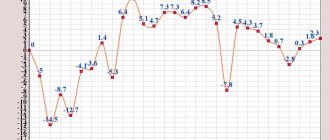Definition
Local taxes and fees are mandatory payments for individual subjects of legal relations established by the Tax Code of the Russian Federation. Also, local acts adopted by municipal authorities can be sources of law in this area.
Local taxes include taxes on land and property of individuals. Relevant obligations are introduced or terminated in accordance with the Tax Code, as well as regulations adopted in municipalities.
Definition of the concept
Local taxes include mandatory payments that are aimed at replenishing the municipal budget. The sizes and rates are determined by regional authorities. But since local taxes are an integral part of state taxes, calculations must be made on the basis of legal norms.
When establishing a certain tax and its rate, the object, base period and calculation formula are determined strictly by federal legislation. The powers of local authorities include determining the final value of the rate, the deadline for payment and the procedure for its implementation, and preferential categories of persons who are exempt from paying municipal taxes and fees.
Taxes in federal cities
If we are talking about cities of federal significance - Moscow, St. Petersburg, Sevastopol - then local taxes and fees are regulated by the Tax Code and the laws of these constituent entities of the Russian Federation. If we talk about establishing appropriate payments, then the powers of authorities in cities of federal significance may be related to the regulation of rates, the procedure, as well as the timing of payment of fees - but only if the Tax Code of the Russian Federation does not contain relevant wording.
In turn, the legislative assemblies of these cities can determine how the tax base is calculated and establish benefits.
Payment nuances
All amounts of local taxes and fees must be paid to the local budgets of the relevant authorities. Taxes from the first to the third paragraph of the previous section are paid throughout the territory of the Russian Federation without fail .
For the first type of tax - on property of individuals - the payment deadline is set on two dates. Property taxes must be paid by September 15th . If the house, building or car is new, then such payment must be made at the beginning of the year following the year of purchase. The collection of taxes on this category of objects can be terminated in one case: upon the destruction of this object.
Rates of taxes and fees, starting from point 8 to point 21, can be developed and approved by local authorities, namely district or city. At the same time, local government bodies do not have the right to establish and introduce taxes or fees that are not approved by the Tax Code of the Russian Federation.
The latter determines such elements of tax as the object of taxation (what is taxed), the tax base (regulatory documents, acts), the tax period, and the calculation procedure.
And local authorities can regulate such elements of the tax as the tax rate (percentage or fixed amount), the procedure and terms of payment, benefits and their application (application procedure). Cities of federal significance (for example, Moscow, St. Petersburg) are guided in matters of taxation by the laws of the constituent entities of the federation .
Key principles
Local government taxes in the Russian Federation are levied within the framework of the following key principles.
Firstly, the specific list of payments is determined at the level of federal legislation, as well as the powers of municipalities related to the establishment, adjustment or abolition of taxes and fees.
Secondly, if the region has such administrative-territorial units as urban districts, then they can establish powers related to the regulation of taxes and fees, which are accepted for settlements and districts.
Thirdly, the corresponding payments are intended to fill local budgets. Taxes and fees, therefore, are among the key mechanisms for the financial support of municipalities. Payment rates are established by the legislative authorities of local territorial entities. The Tax Code of the Russian Federation also provides for standards for the corresponding transfer of taxes and fees to the municipal budget.
Fourthly, if we are talking about the treasury of a separate settlement, which is part of the district, then revenues from local taxes and fees can be credited to it within the framework of the standards for implementing budgetary policy at the appropriate level, enshrined in federal legislation.
Aspects of establishing taxes and fees
Let's look at some key aspects related to establishing the type of payments in question. As we noted above, local taxes include land and property taxes. We examined the key nuances of their establishment at the level of districts, districts and cities of federal significance. At the same time, it is useful to note what regulations govern the establishment of local taxes and fees associated with property and land. This is primarily the Tax Code of the Russian Federation, as well as the Federal Law, adopted on December 9, 1991, “On taxes on property of individuals.” Establishes local taxes and fees of the Tax Code of the Russian Federation. However, in this aspect, local regulations of municipalities can also be applied.
Who pays local taxes and fees? It all depends on the specific type of obligation involved. Let's consider this nuance in more detail.
Concept and types of local taxes and fees
Definition 1
Taxes are mandatory payments that are payable by taxpayers to the budgets of the relevant levels and extra-budgetary state funds in accordance with the requirements of federal laws on taxes and legislative acts of the constituent entities of the Russian Federation, as well as decisions of local governments in accordance with their powers.
The nature of monetary relations is determined by the economic essence of taxes that arise between the state and legal entities and individuals. Such monetary relations have an objective conditionality and have a special function - they place funds at state disposal. Accordingly, taxes can be considered as an economic category with two functions:
- fiscal,
- economic.
Fulfilling the first function allows you to form a budget fund. The implementation of the second function allows the state to influence production processes by stimulating or restraining it, strengthening or weakening the accumulation of capital, expanding or reducing the effective demand of the population.
Finished works on a similar topic
- Course work Accounting for local taxes and fees 470 rub.
- Abstract Accounting for local taxes and fees 280 rub.
- Test work Accounting for local taxes and fees 210 rub.
Receive completed work or specialist advice on your educational project Find out the cost
The forms of manifestation of tax are various types of tax payments, which are established by the legislative authorities. The organizational and legal side of the tax lies in the mandatory and individual nature of the gratuitous payment collected from enterprises and individuals in the form of alienation of funds that belonged to them by right of ownership for the purpose of financial support for government activities.
Definition 2
The combination of various taxes forms the tax system of the state.
The authorities of cities and districts, or, as they are also called, self-government bodies, have the right to introduce local taxes on their territory. However, local authorities can only impose taxes that are authorized by the federal authorities.
Local taxes and fees include:
- land tax;
- a single tax on imputed income;
- trade fee.
The rules for collecting these taxes are determined by the federal authorities. Local authorities have the right only to change and supplement these rules within the framework of federal legislation.
Too lazy to read?
Ask a question to the experts and get an answer within 15 minutes!
Ask a Question
Local taxes and fees include mandatory payments by individuals and legal entities received by the budget of local governments in accordance with legislative acts.
The system of local taxes and fees has its own characteristic features, in particular:
- multiple tax payments;
- the predominance of direct taxes in local taxation;
- no restrictions on local taxes;
- lack of instructions from the Ministry of Finance and the Tax Service of the Russian Federation for most local taxes and fees;
- Payers of local taxes and fees are both legal entities and individuals.
- low share of revenues to local budgets from local taxes and fees.
Who pays to the local budget?
If we are talking about land tax, then the obligation to pay it can be assigned to both individuals and organizations that own land by right of ownership, perpetual use or inherited possession. That is, it can be noted that if a person or company rents land, then they do not bear the obligation to pay the corresponding taxes.
As for personal property tax, all owners of property falling under the categories listed in the relevant laws must pay it. Thus, the objects of taxation are residential buildings, dachas, apartments, as well as garages and other types of buildings. That is, local taxes and fees of the Russian Federation in this aspect are somehow related to real estate.
What fees are included in the local list?
Local taxes and fees are enforced in accordance with state and local regulations. For cities with a special status - Moscow, Sevastopol, St. Petersburg, fiscal payments are established in local legislative regulations. Art. 15 of the Tax Code of the Russian Federation establishes types of fees that have not changed for 2018:
- Registration. It is levied on the activities of an individual as an entrepreneur. The amount is tied to the amount of salary and benefits;
- For the construction of facilities in the resort area. The customer and contractor pay for the right to construction work at the local rate;
- Resort. It is paid by tourists and vacationers at local rates;
- Target. The type and rate are determined by the municipal government. Legal entities and individuals pay 3% of the annual labor funds for landscaping, cleaning the territory, maintaining the police, etc.;
- Advertising. An amount of 5% of the price of advertising in local media is paid by legal entities and individuals;
- Resale of cars, office equipment, computers. The municipal budget receives 10% of the transaction amount;
- Owning a dog. Paid per year in the amount of 1/7 of the monthly salary;
- Trade in alcoholic beverages. Legal entities pay 50 mrot, and individuals – 25 mrot annually. Temporary retail outlets are taxed at 50% of the minimum daily wage.
This is not a complete list of local taxes and fees for 2018. The list includes fees for parking, organization of lotteries and prize draws, apartment warrants, use of state symbols, organization of commercial filming. Business and real estate taxes have some nuances.
You can read more about indirect taxes in our article here
What do you need to know about local property taxes?
What taxes go to the local budget from the activities of an entrepreneur? This group includes fees for all types of transactions:
- sale of goods and products of various types;
- household services for the population according to the Cabinet of Ministers list;
- exchange transactions with currency and securities;
- entertainment business - holding attractions, concerts, operating cinemas and commercial museums.
The tax rate is set by regional and city authorities. The percentage depends on the specific reporting period and the economic state of the region. The amount of the fiscal payment is also determined by the main type of activity and the location of the company. In this case, purchasing a trade patent is mandatory.
Nuances of local property tax
Local taxes and fees also include payments from property owners. The owners contribute funds to the regional and city fund:
- residential non-privatized buildings;
- houses in areas of alienation;
- buildings of children's family homes;
- country outbuildings;
- real estate owned by large families;
- dormitories of universities, technical schools, enterprises.
The timing of fiscal payments is regulated at the local level, but the period for payment of property taxes is set as until September 15 or November 25, 2020.
Similar articles
- Accounting for calculations of taxes and fees
- Taxes in 2020 - federal, regional and local
- Table of federal, state and local taxes
- What taxes are indirect?
- Which budget is the land tax included in?
Tax calculation
The corresponding payments to the local treasury are calculated in accordance with the recommendations set out in the letters of the Federal Tax Service and the Ministry of Finance. As for land tax, you can be guided by the wording of the letters of the Ministry of Finance dated April 9, 2007 No. 03-05-05-02/21 and dated June 6, 2006 No. 03-06-02-02/75.
If you need to calculate property tax, you can use Letter of the Ministry of Finance dated April 21, 2008 No. 03-05-04-01/19. In the case of real estate taxation, you can pay attention to the Letter of the Federal Tax Service of the Russian Federation dated July 24, 2007, No. 04-3-02/001613.
Rates
Having considered the types of local taxes and fees, we will study the aspect that reflects the rates established by law in relation to this type of payment.
How is the appropriate amount for land tax determined? Rates are set, as we have already determined above, by the authorities of municipalities or cities of federal significance, however, in accordance with the norms of the Tax Code of the Russian Federation, they cannot be higher than 0.3% of the cadastral value of the land, if we are talking about agricultural plots or those , which are used by the housing stock, housing and communal services infrastructure facilities, as well as those involved in housing construction. In turn, if the object of taxation is a plot of land for a summer residence, personal household, or farming, then the marginal rate is higher - 1.5%. In this case, the municipal authority has the right to differentiate the corresponding indicator depending on the specific category of lands owned by citizens or organizations.
Land tax
The fiscal system of the Russian Federation provides for the payment of this tax in order to create incentives for the rational use of land and infrastructure development. There is a two-level regulatory framework in relation to tax:
- Federal legislation
- Acts of local government bodies
- Tax rates
- Payment procedure and terms
- Providing benefits
- Procedure and grounds for providing benefits
- An amount of money that is not subject to taxation for certain groups of taxpayers.
- property;
- lifetime ownership, transferred by inheritance;
- use on an ongoing basis.
Moscow and St. Petersburg, which are cities of federal significance, have their own rules. They mainly affect the introduction of land tax.
Local authorities have the right to establish:
Only those who own a plot of land must pay tax. It must be available on one of the following rights:
Individuals and organizations that use land on the basis of a lease or free use agreement for a certain period are exempt from paying tax.
The object of tax payment is a land plot located on the territory of a municipality whose authorities have introduced the corresponding tax. Exceptions are items that are limited in circulation or withdrawn from it in accordance with Russian legislation.
Property rates
As for property tax, the scheme is more complicated. The fact is that in relation to real estate of individuals, local Russian Federation taxes are now collected within the framework of a transitional model, conditioned by certain reforms in legislation. For a long time, the corresponding payment was calculated based on the inventory value of the property. According to amendments to the Tax Code of the Russian Federation, starting from 2020, the basis for determining the taxable base will be cadastral prices, which are generally close to market prices. However, the amendments under consideration to the Tax Code of the Russian Federation allow for the transition of some Russian regions to the new model already now. What, then, are the features of possible scenarios for calculating property taxes?
The first option is that the region has not yet taken practical steps towards the transition to a new taxation regime. In this case, when calculating the corresponding tax, the old norms that were laid down in the Tax Code of the Russian Federation will be used. If the value of real estate is no more than 300 thousand rubles, then the marginal rate cannot be more than 0.1%. If from 300 to 500 thousand, then the minimum rate is 0.1%, the maximum is 0.3%. If the property costs more than 500 thousand rubles, then the minimum rate is 0.3%, the maximum is 2%. The municipality has the right to establish the corresponding values within the intervals fixed in the Tax Code of the Russian Federation.
The second option is that the region has adopted the appropriate regulations that make it possible to begin the practical implementation of the innovations provided for by the noted amendments to the Tax Code of the Russian Federation. In this case, a transitional formula for calculating property taxes will be in effect until 2020.
First, the total size of the tax base is determined - the cadastral value of housing. The corresponding indicator is calculated by the Rosreestr authorities and entered into a database, access to which will be possible via the Internet.
Then, in relation to the figure reflecting the cadastral value of the property, a statutory deduction is applied, based on the area of the property. For apartments this is 20 sq. m, for rooms - 10 sq. m. Next, the base amount payable is calculated based on the rate, which is also approved by the municipality. Its interval is 0.1-0.3%. However, it can be noted that the region has the right to reset the rate. The next step is to apply a reduction factor, which is used to ease the tax burden for citizens during the transition period until 2020. It is multiplied by a figure that is the difference between the fee calculated according to the new formula and the tax, which is determined on the basis of the previous formulas that we presented in the first scenario. The result of the calculations is added to the figure that would be obtained if the tax was calculated according to the old scheme. This will be the amount payable to the local budget.
The value of the coefficient in 2020 is 0.2, in 2016 - 0.4. But in 2019 it will not be used. By 2020, all regions of the Russian Federation will have to switch to a model for calculating the tax base for real estate based on its cadastral value.
This is the scheme for calculating property taxes within the framework of the Russian taxation model. It is more complex than the mechanism adopted, for example, in Belarus: there the rate is fixed - 0.1%. At the same time, as some experts note, the determination of the value of a taxable object is carried out in the Republic of Belarus according to slightly different schemes, in a number of ways more complex than in Russia. In principle, it can be noted that local taxes and fees in the Republic of Belarus do not coincide at all with those established in the Russian Federation. For example, such payments, in accordance with the Tax Code of Belarus, form a tax on the ownership of pet dogs, as well as fees for the resort and for producers.
Enrollment in the budget
We have studied what taxes the local Russian Federation collects, as well as how they are established and calculated. Let us consider the aspect related to the practical use by the municipality of the corresponding financial source. In accordance with Article 61.1 of the Budget Code of the Russian Federation, 100% of the amounts received as taxes on land and property of individuals must be credited to local budgets. In turn, the treasury of the settlements that are part of the district can be replenished based on the decisions of the municipal authorities.
Localization of taxes
We have identified the types of local taxes and fees recorded in the Tax Code of the Russian Federation, which form the basis for the treasury of municipalities. At the same time, cities and districts, which form the level of local government in the political system of the Russian Federation, also have other resources to replenish their budgets. Some lawyers associate the concept of local taxes and fees not only with specific wording in laws, but also with the actual mechanisms presented at the appropriate level of political government.
Thus, experts believe that the term in question can in some cases be interpreted more broadly than is provided for, in particular, in federal legislation. In this sense, local taxes include not only land and property taxes, but also any that in one way or another are capable of replenishing the treasury of the municipality. Let's look at them.
Parking fee
Local taxes include fees from owners of paid parking lots. It is worth noting that this type of payment is calculated based on the territory allocated for these commercial purposes. The coefficient established by law is multiplied by the number of square meters occupied by parking (percentage of the minimum wage established in the reporting year). Payments for this type of tax are made quarterly.
Regional taxes go to the municipal treasury
The Tax Code of the Russian Federation provides for the collection of payments classified as regional. There are relatively few of them. These include taxes:
- on the property of legal entities;
— for the gambling business;
- for transport.
Strictly speaking, the municipality is not involved in this level of collection. However, in practice, there is often a redistribution of the corresponding financial resource between different levels of the state budget system. The basis for this is the standards defined by the relevant laws. Thus, the Budget Code of Russia determines that constituent entities of the Russian Federation can establish appropriate standards for settlements and municipalities, calculated on the basis of regional taxes and fees. The same applies to federal cities.
Interbudgetary interactions of the corresponding type, within the framework of which part of regional payments are transferred to local budgets, are regulated by laws adopted at the level of authorities of the constituent entities of the Russian Federation. At the same time, the contribution standards, as some experts note, are usually characterized by stability.
Schemes of interbudgetary interaction may be different. For example, in a number of cases, constituent entities of the Russian Federation have the right to establish standards that require contributions to municipal budgets instead of subsidies in favor of the corresponding territorial units used to equalize the level of financial security of settlements. At the same time, the legislation of the Russian Federation contains wording according to which such initiatives must be coordinated by the regional authorities with the local ones.
Types of local taxes.
Sometimes called a council tax, a local tax is any type of taxation imposed by a local authority. Cities, counties, and similar jurisdictions often use taxes as a means of creating revenue streams that help maintain public services and various important functions in the area. Depending on the nature of the local tax, it may or may not be eligible for use as a deduction on your regional or national income tax return. One of the most common examples of a local tax is known as a sales tax. In this scenario, the city or municipality is subject to a tax that is assessed on various types of goods sold at retail outlets within its jurisdiction. Items such as food, clothing, entertainment and other purchases may be subject to some kind of local tax. Because taxes of this type are collected at the point of sale, the consumer generally does not have to keep track of the taxes paid; that is done by the retailer or business owner.
Many local jurisdictions also use laws as a means of generating revenue, which is used to support local services. Unlike sales taxes, which are assessed each time a purchase is made, property taxes are assessed on an annual basis using criteria established by local jurisdiction regulations. While this is not always the case, local property taxes will likely be higher if there are no provisions to collect sales tax on essential items such as food or clothing.
Local sales tax burdens can sometimes be onerous for residents of a given jurisdiction. This is because they may be subject to more than one type of local tax. A citizen of a small city may pay city taxes, while at the same time some county taxes are assessed. In this case, retailers collect all applicable taxes at the point of purchase and submit the appropriate percentage of revenue collected to each jurisdiction. This means that if a consumer currently pays ten percent in taxes on purchases, sixty percent of that amount could go to the state tax agency, thirty percent to the city, and twenty percent to the county or county.
For local services that are funded through local tax initiatives, many municipalities use the money collected to maintain streets and roads within the jurisdiction, manage the costs associated with waste removal in water and sewer systems, and even to provide support to local school systems. Sometimes a local tax may be imposed for a specific purpose and the funds collected cannot be used for any other purpose. For example, if a county imposes an education tax, the money collected is intended to be used for local schools and cannot be redirected for use in street repairs or to support the maintenance of municipal parks.
Taxes are diverse
Thus, we record the fact that local fees are a fairly multifactorial phenomenon, which, according to some experts, can be recorded in two main mechanisms operating in the tax system of the Russian Federation. Firstly, these are payments classified at the level of federal legislation - land tax and property tax for individuals. Secondly, these are regional and federal taxes, through which the local budget receives funding in one way or another.









